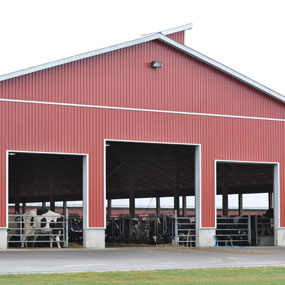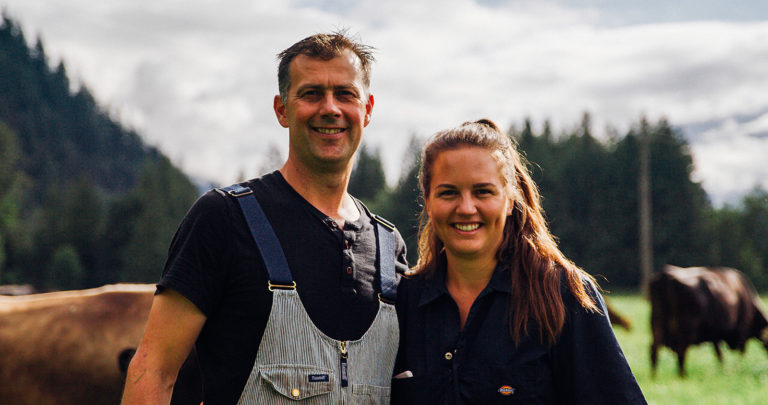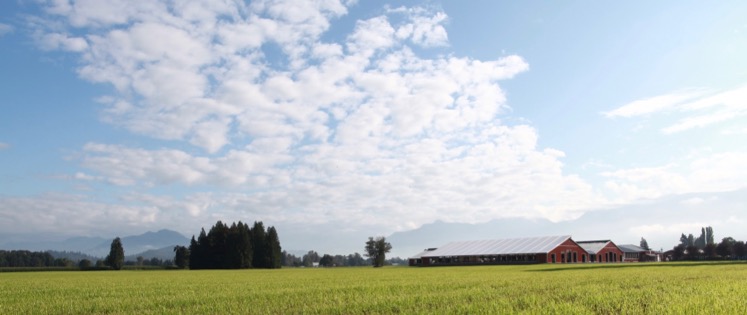We can help answer some Canadian dairy supply management FAQs!
Are dairy farmers subsidized?
No. 100% of producers’ milk revenues come from the marketplace. The Canadian dairy industry has made significant productivity gains without the help of expensive government programs. The United States and the European Union on the other hand, continue to dole out billions of dollars to their farmers. A recent study published by Grey, Clark and Shih, international trade practitioners, reveals that US dairy farmers can get up to 1/3 of their income from direct government payments. Dairy farmers have dealt with the impact of BSE for more than 18 months above facing increasing costs for items like energy and insurance. Under similar conditions, other businesses would have already increased prices.
Do you export your surplus production?
Because overproduction is discouraged with supply management, very little poultry, egg and dairy products are exported outside of Canada. Export subsidies are the biggest culprits when it comes to dumping products. This is of significant concern to the developing nations whose subsistence farmers cannot compete against the artificially low-priced products dumped into their markets. Export subsidies are widely used in the United States and Europe, for example.
Does supply management block imports?
No. Supply management allows Canada to manage imports in a predictable manner. In accordance with WTO rules, a pre-determined level of imports enters at very low tariffs, when it is not tariff-free. Once this level of imports has been reached, higher tariffs apply. The goal is market stability for farmers, processors and consumers. Canada provides access to more dairy, poultry and egg products than many other countries. For example: Canada provides access equivalent to 5% of the market for eggs and turkeys, 7.5% for chicken, and 21% for hatching eggs. In comparison, the European Union offers a mere 0.5% access for poultry products. Canada also imports more dairy products than the United States offering over 4% access, while the United States offers only 2.75%. The Canadian government’s agricultural trade position calls for all countries to provide clean market access. If all countries with tariff rate quotas offered clean access at 5%, trade could increase by 53% for cheese, 107% for pork, 94% for poultry, 44% for wheat and 99% for beef.
Does supply management make products more expensive?
No. Consumers get high quality poultry, egg and dairy products at reasonable prices. The retail price evolution of these products is in line with that of other food products in Canada. Moreover, regular cross-border surveys have shown that consumers pay less in Canada than in the U.S. for the same basket of dairy products. The price of eggs is also lower in major Canadian cities than in equivalent American cities surveyed. At the same time, dairy, poultry and egg farmers receive their income from the sale of their product, not from government cheques.
Does your way of pricing products encourage overproduction?
Unlike price support in other countries, supply management in Canada ensures that total production responds to the Canadian demand for poultry, egg and dairy products. Each producer fills a part of the demand (quota) without producing more than what is needed in Canada.
How does supply management work?
Supply management is a Canadian approach to agricultural production that benefits Canadian farmers, processors, and consumers. Every year farmers anticipate the demand in the marketplace and adjust production accordingly. Because Canadian production is matched to Canadian demand, producers can expect a stable and fair income, processors get a stable and predictable supply of product, and consumers are provided with a consistent choice of excellent and high quality products at reasonable prices.
What is the farmer’s share?
A 250 mL glass of 2% milk in a restaurant costs $1.95. Of that, $0.16 goes to the milk producer (who feeds and milks the cows and transports the milk), $0.10 goes to the processor-distributor (who pasteurizes, processes and packages milk), and the rest (more than 80%) goes to the restaurant, where the milk is poured into a glass and carried to a table. A medium pizza costs $14.24 at a restaurant. Of that $14.24, the dairy farmer’s share from the milk used to make the cheese on the pizza is $0.60. Even the tip left for the server or the taxes on the restaurant’s bill amount to more than what the farmer gets from the sale of dairy products to restaurants!
Why is milk sometimes cheaper in the U.S?
There are two factors that go into the calculation of milk. The CPI (consumer price index) and the COP (cost of production).
Changes at the consumer level occur as a result of price changes at either (or both) processing or retail levels. If the cost of production for either of these levels goes up (processing costs, retail costs etc.), then it is reflected in the prices they charge for all products, including milk. Generally speaking, milk prices do not increase as often as other commodities that are tied to the Consumer Price index.
The farmers’ share of milk sold is low. For example, on a glass of milk sold at a restaurant, (i.e. for $2.00), the farmers’ cut of that is a mere 21 cents and for the cheese on a restaurant pizza sold for $18.50, the farmers’ cut of that is just 69 cents. That includes the care and welfare of a herd of cows, and a job that is 365 days per year.
Canadians spend 10% of their disposable income on food, one of the lowest in the world, of which 1.5% is on dairy products.
Consumers in other countries, like the U.S. and E.U., pay twice for their dairy products; once at the checkout and again at tax time whereas Canadian dairy farmers receive their income entirely from the marketplace.
This occurs because in the U.S., public tax dollars are paid to U.S. dairy farmers, through government subsidies, and this is estimated to provide 30% of U.S. farmers’ income. This does not occur in the Canadian dairy industry. In other countries where prices paid to farmers are unregulated, consumers rarely benefit at the checkout. In New Zealand, which has some of the world’s lowest dairy production costs and milk is based on world prices, consumers pay about the same for a litre of milk as they do in Canada.
In addition, some countries allow the use of hormones like rBST (recombinant Bovine Somatotropin Hormone), which is illegal in Canada. Canadian milk is one of the highest qualities in the world: Watch “The Truth About Canadian Milk”
Read more
Learn more about the BC Dairy Industry



